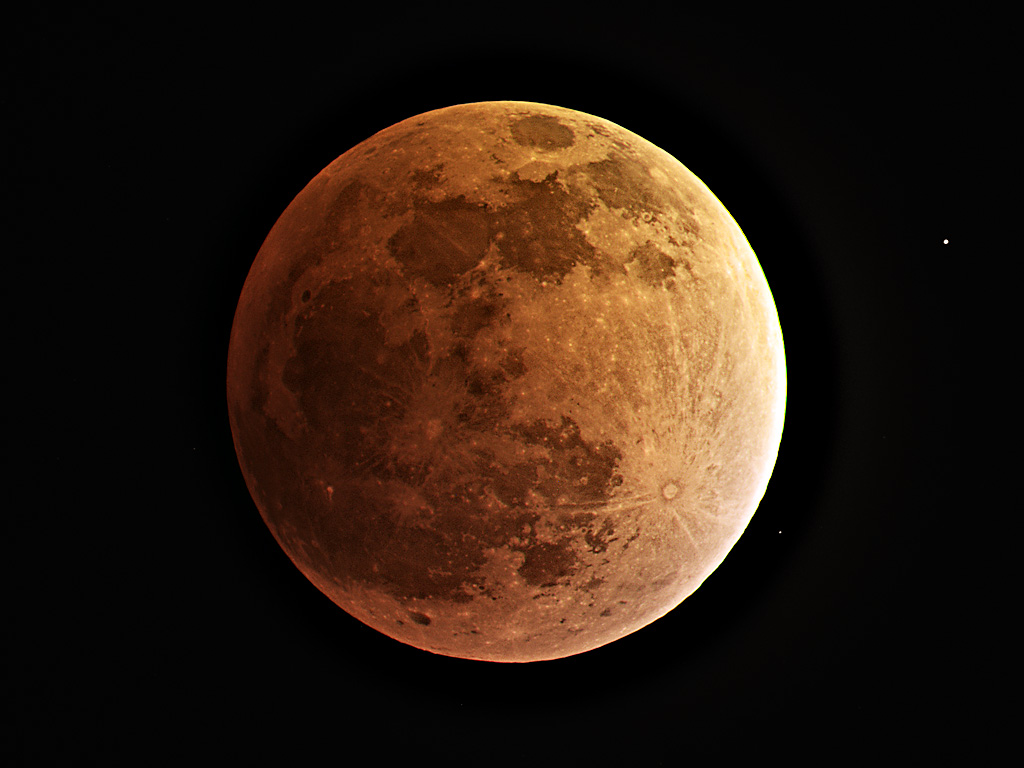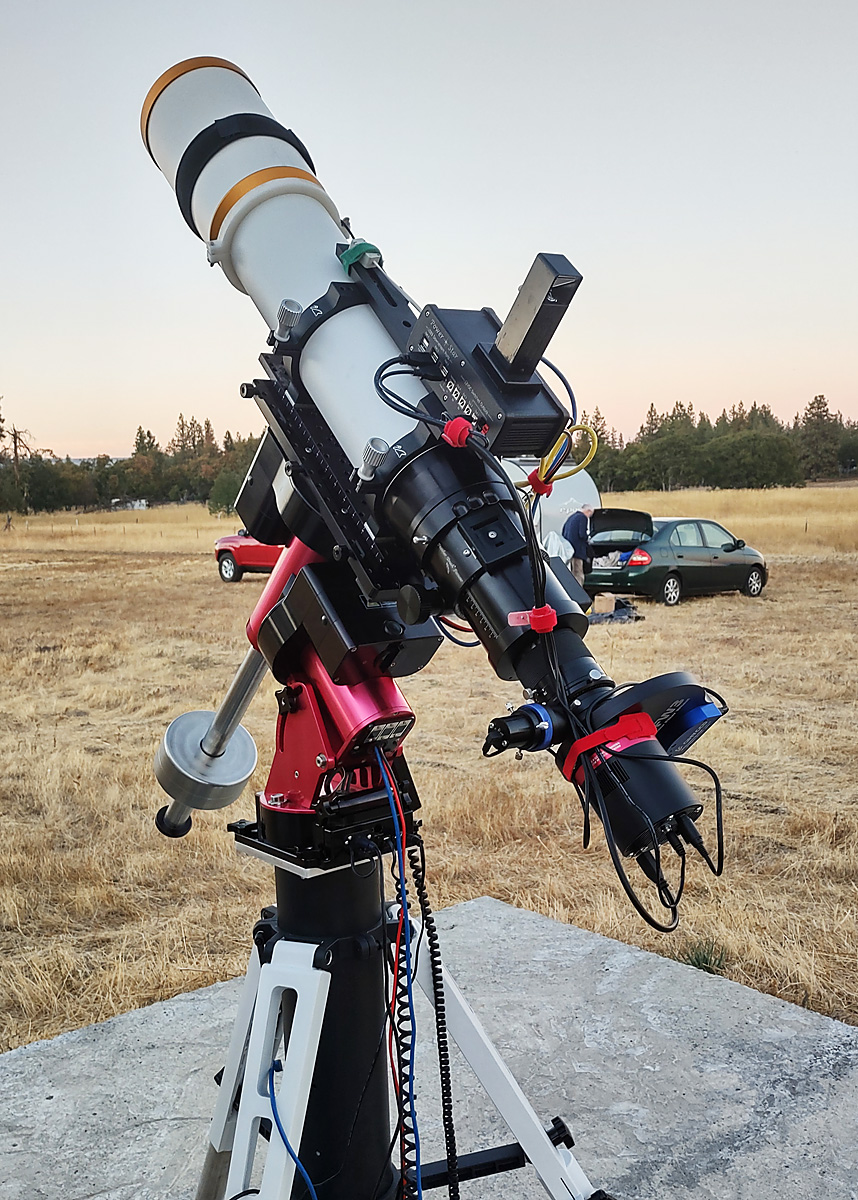Here in the Pacific Northwest we’re not likely to be able to see this through the clouds, but if it’s clear where you are, it should be worth staying up late to watch it. Maximum totality is at about 2:15AM (PST), Nov. 8th (tonight/tomorrow morning), but the whole event lasts from around midnight to almost 5AM.
I haven’t posted here in a very long time – sorry. It’s partly due to being busy with a wide variety of things, but also not having much to report. I did get a new camera recently, the QHY268M, pictured below attached to my William Optics FLT-132 telescope.
This picture was from the last star party I went to, at the end of September. We all had a good time there, but I didn’t get any useful images because of a problem with internal reflections in the ‘scope. Since then I got some flocking material and applied it to all the potential problem areas in the ‘scope, but haven’t been able to test it due to more-or-less continuous cloud cover.
The QHY268M has an APS size sensor, the same as most DSLRs, and larger than I’ve ever had in an astro-camera. This meant that I had to get larger filters to completely cover the sensor area. For the boadband (RGB/normal color) filters this was just expensive. For the narrowband filters it is outrageously expensive, so for now I am going to use the existing, small narrowband filters and live with the bit of vignetting they produce. I’m fairly sure that neither the new camera or the too-small filters are related to the reflections I saw because I had the same problem with the older camera (an ASI1600).
The QHY268M is a pretty awesome camera, and I’m looking forward to using it. Compared to the ASI1600, it has the same size pixels (3.8 microns), but 26 million of then versus 16 million. It is also quite a bit more sensitive and lower noise. This is due in part to the use of “back side illumination”. What that means is that the sensor IC is made with an extremely thin, transparent substrate, then mounted upside down, so that light actually hits the photoreceptors from the back side. This avoids having a portion of the light blocked by the metal interconnects on the front side. This technique has been used for many years in professional observatories, with CCD sensors. But in those days it was done by very carefully grinding off and polishing the back side of the sensor IC, which is an absurdly expensive operation. Now, many CMOS image sensors are mass produced with back side illumination. Exactly how they do it I do not know.
Oh, that portable pier is also a new addition. At an earlier star party I had a problem with the camera hitting a leg of the tripod. This iOptron pier allows me to get everything up high enough and away from the legs.
The star party season is over, and I wouldn’t be able to go to another anyway because of the next bit of news: I have sold my motorhome, the Starship Gamma Pictoris. It was great to be able to live in relative comfort while at star parties, but owning an RV is also a pain in the neck. Like a boat owner, the happiest days in the life of an RV owner are the day they buy it and the day they sell it. I will be replacing it with something, but don’t yet know exactly what.
One last update is that I recently deactivated my Twitter account, since I do not want to be associated with Elon Musk’s Twitter. My guess is that this will not affect anyone. I had the account so that my posts here could be automatically posted to the Twitter account to let followers know, but I never had any indication that people were using that mechanism. If you were relying on Twitter to let you know when I posted something, I apologize for the inconvenience.

